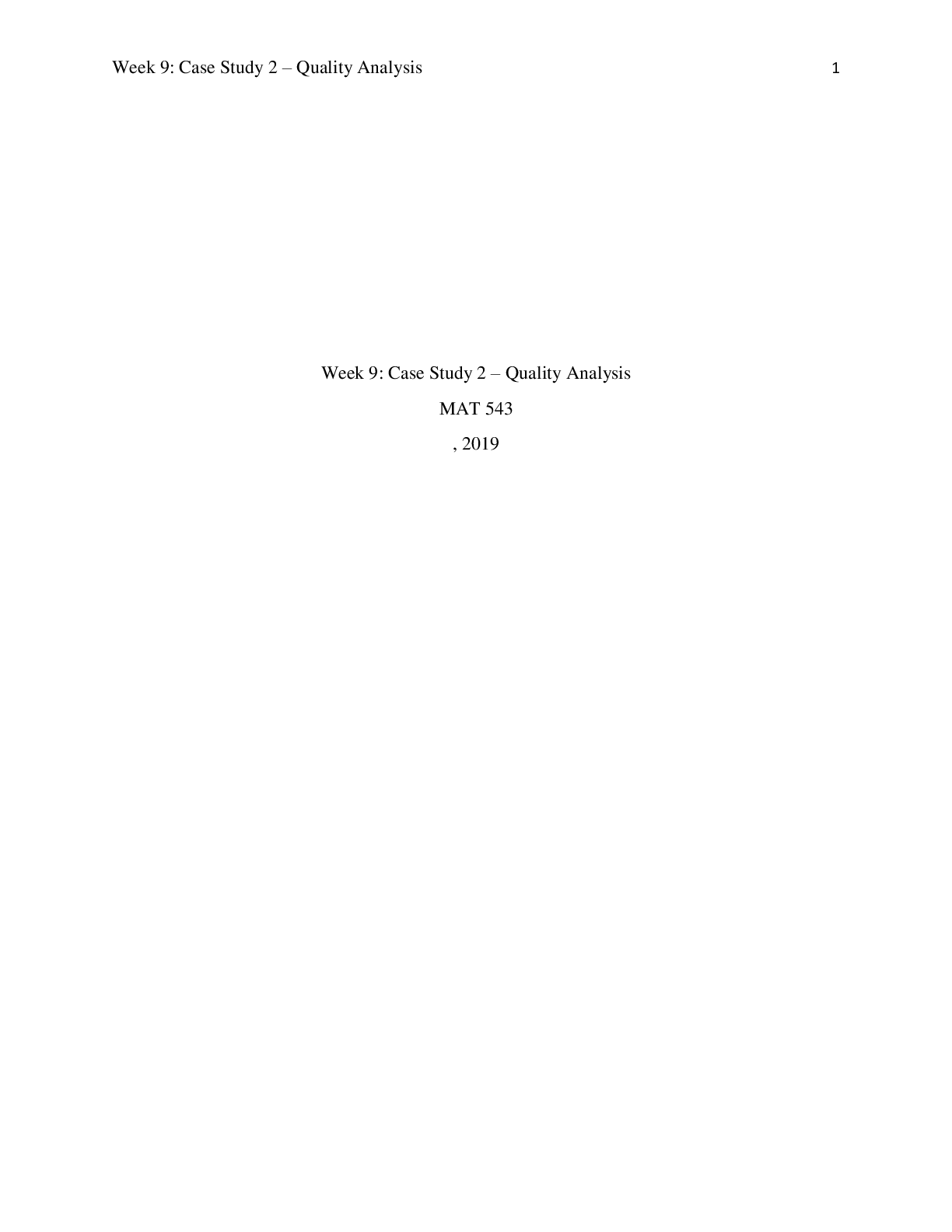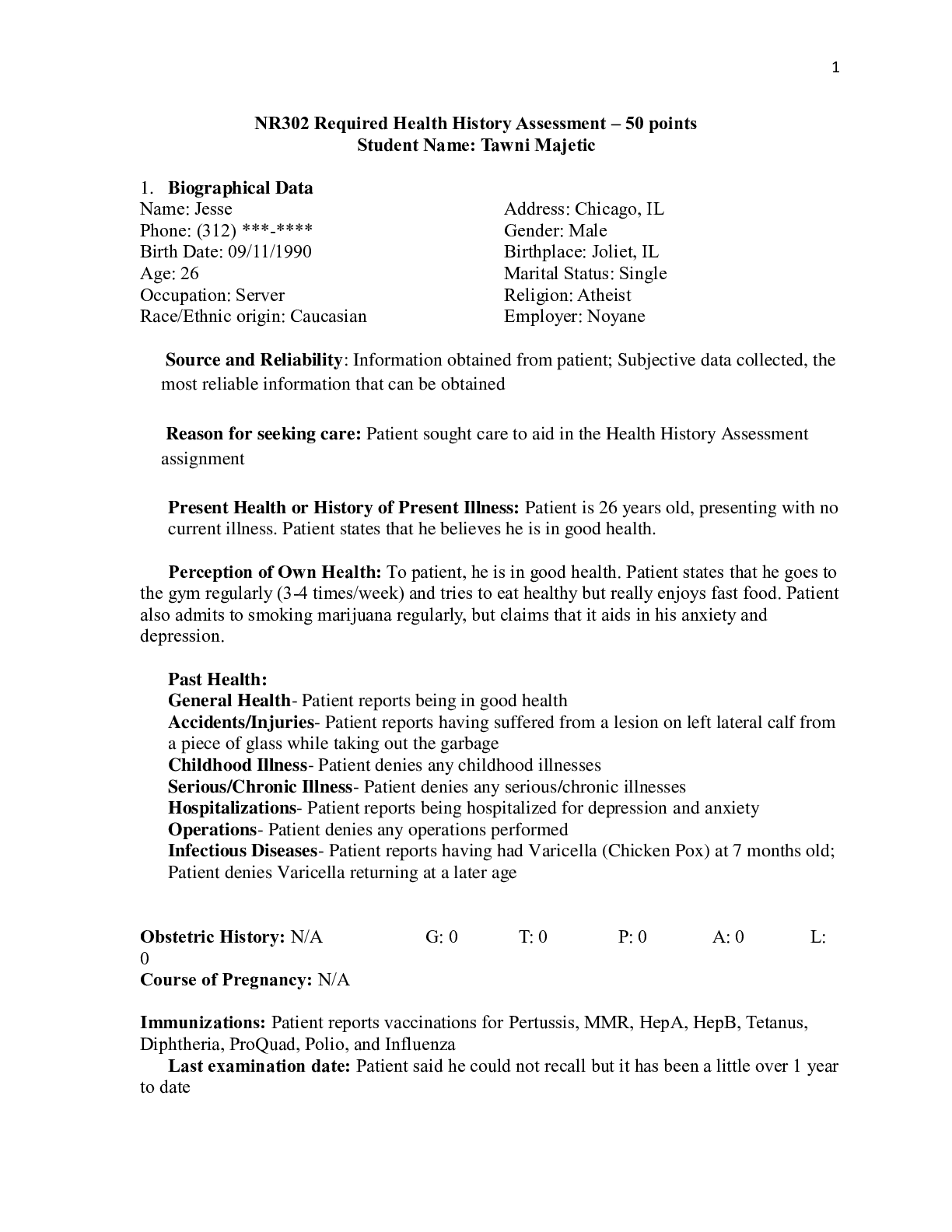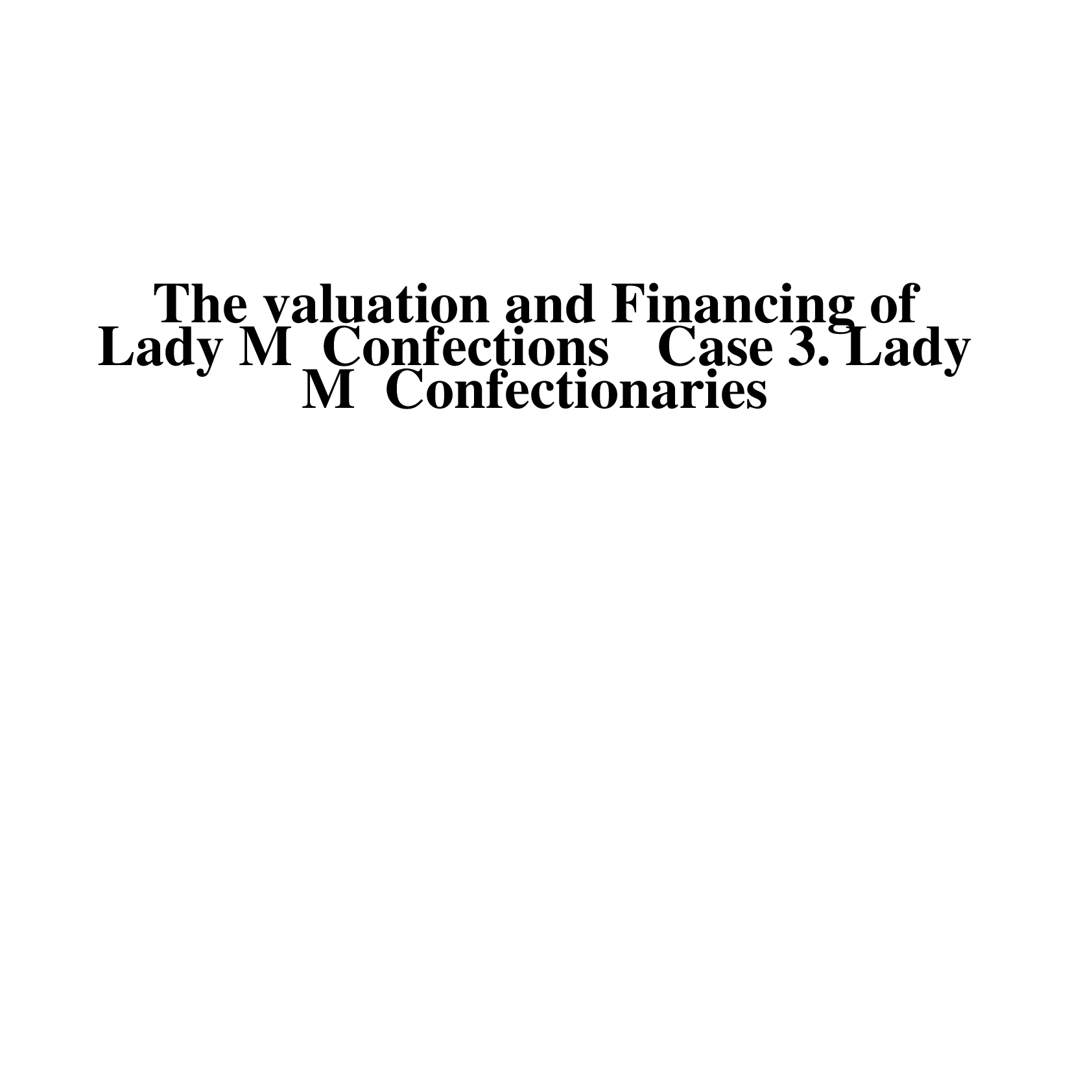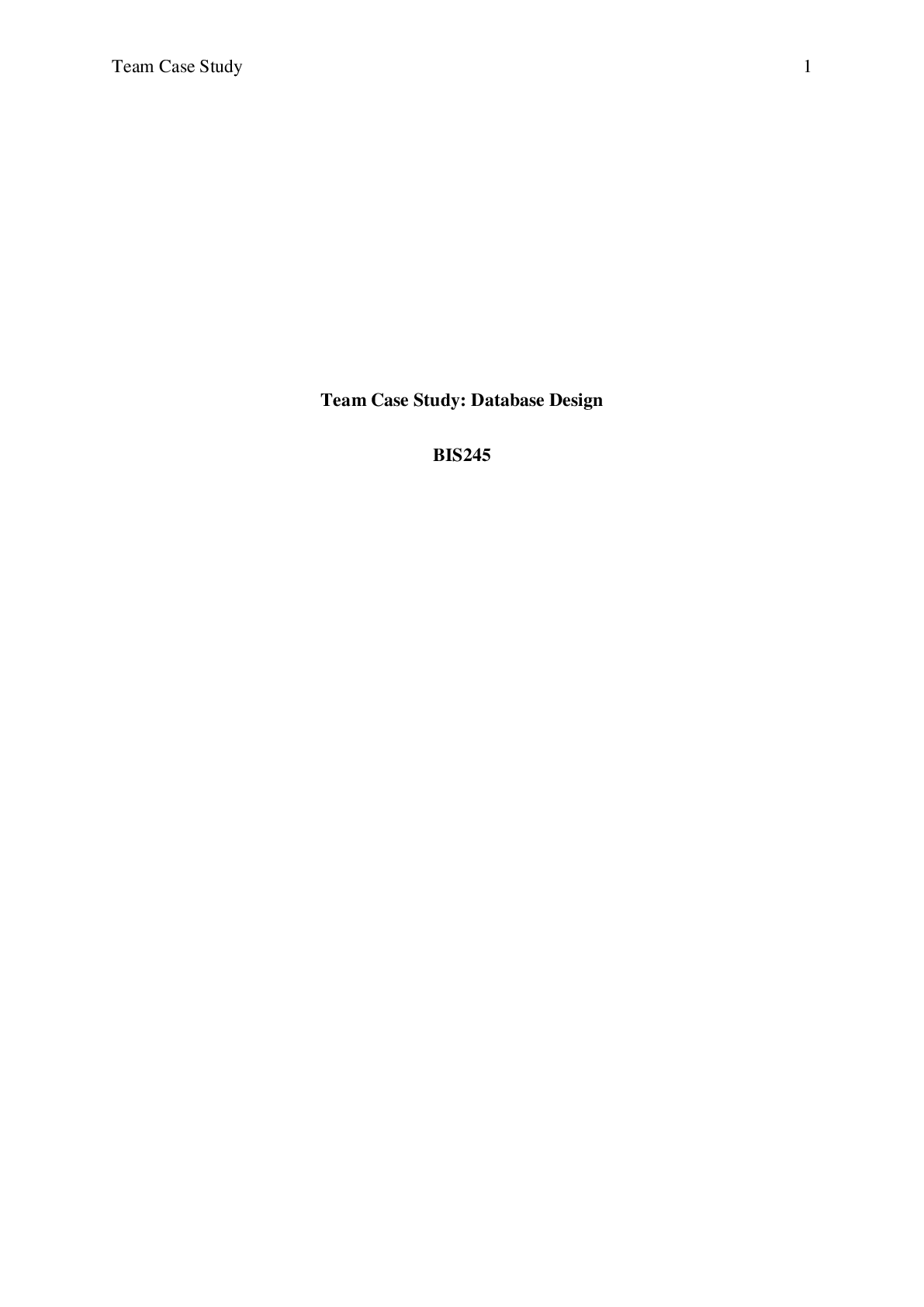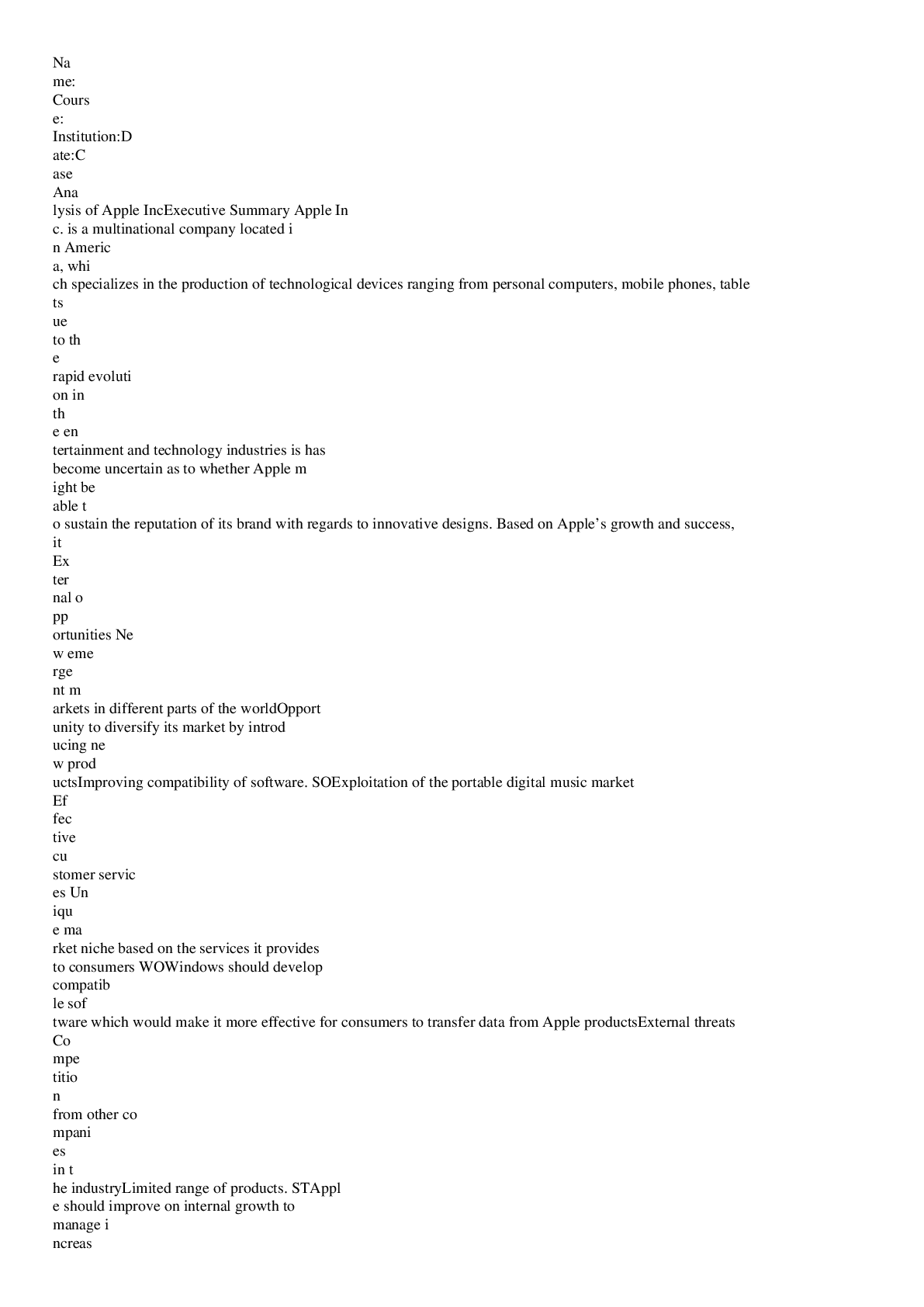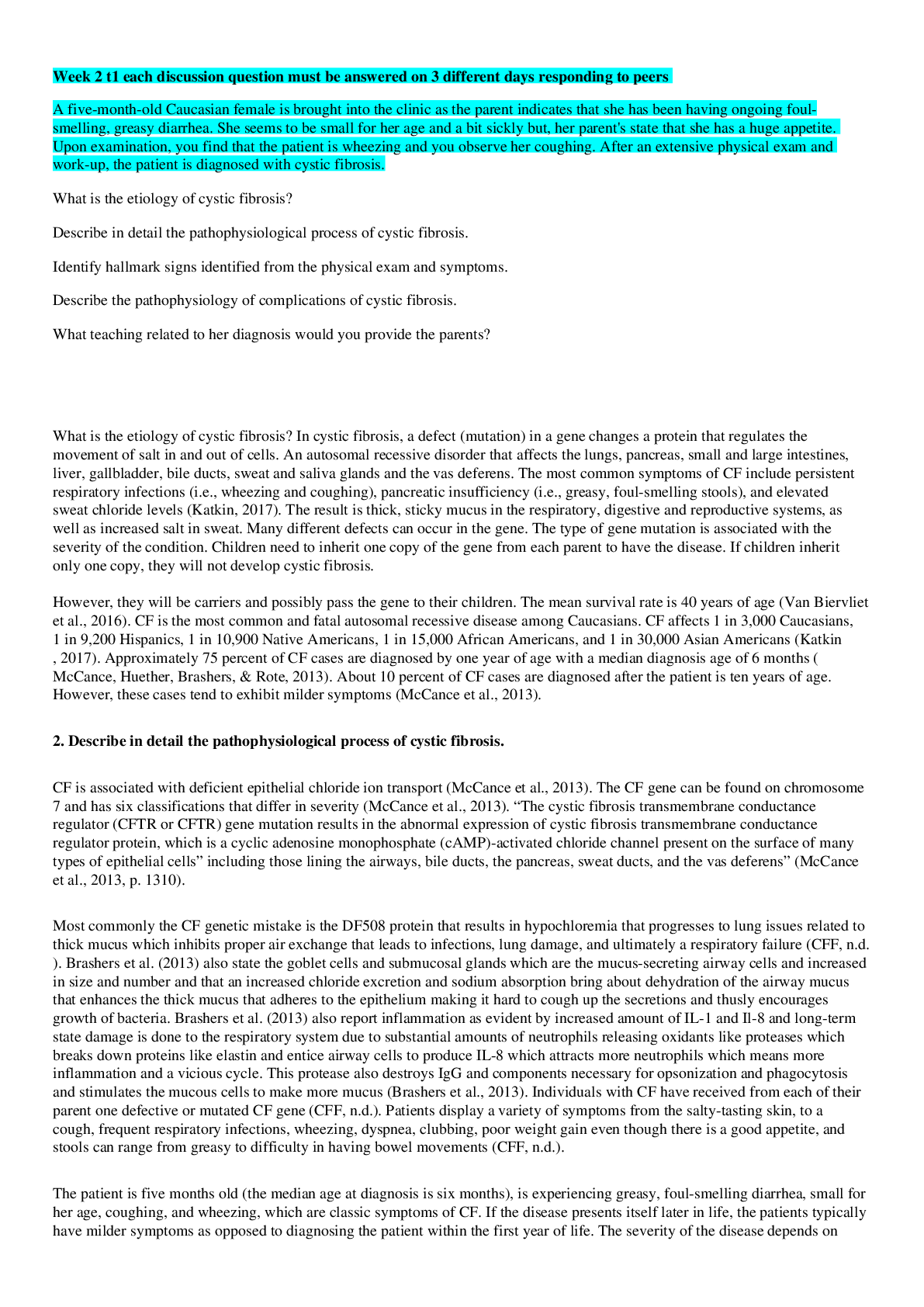*NURSING > CASE STUDY > BUSINESS 102 milestone 2 (All)
BUSINESS 102 milestone 2
Document Content and Description Below
BUSINESS 102 milestone 2 1 Choose the legislation that was NOT part of Theodore Roosevelt’s Square Deal. A law was passed that enabled the President to establish national monuments. ... A law was passed that regulated interstate transportation on bridges and ferries. A law was passed that made it illegal to place trash in any navigable waterway in the U.S. A law was passed that required product labels listing all ingredients. RATIONALE The Hepburn Act increased the power of the Interstate Commerce Commission to regulate railroad prices and practices, and interstate transportation on bridges and ferries. The Antiquities Act enabled the President to declare lands “of historic or scientific interest” as national monuments. The Pure Food and Drug Act required labeling which listed all ingredients in food and medicine products. All of these acts were part of the Square Deal. CONCEPT Theodore Roosevelt 2 The Red Scare was a period following World War I in which Americans suppressed radical dissent. Which event is NOT considered a cause of the Red Scare? Laborers who had originally agreed not to strike in support of the war effort participated in nearly 3,000 strikes in 1919. The tsar’s regime in Russia was overturned by Communists, and some Americans feared labor unions in the United States were being infiltrated by these revolutionaries. A bomb explosion damaged the home of Attorney General A. Mitchell Palmer in June 1919. Race riots revealed that white Americans were willing to use violence and intimidation to maintain positions of supremacy in Northern cities. RATIONALE The Red Scare, or the period following World War I in which Americans restricted and discriminated against any form of radical dissent, was preceded by the Bolshevik Revolution in Russia, one of the most significant waves of labor unrest in American history, and growing fears of violence committed by anarchists and other radicals. Though 1919 was also characterized by race riots taking place throughout Northern cities, they were unrelated to the Red Scare. CONCEPT The Signifcance of 1919 3 Progressives pushed for democratic reforms in party politics, including the creation of a(n) __________, which allowed party members, rather than delegates, to nominate candidates for ofce. commission system direct primary system initiative system recall system RATIONALE The direct primary system, adopted first by a number of Southern states at the turn of the century, allowed for the nomination of political candidates through a direct vote by party members, rather than by the selection by delegates at conventions. CONCEPT Grass Roots Progressivism 4Why did President Theodore Roosevelt use the power of his ofce to advance Progressive reform? He believed the country needed governmental solutions to the ills of industrialization and corruption. He believed the moral and social climate in the United States had deteriorated and required federal regulation. He believed that monopolies and other business combinations were perfectly acceptable under capitalism. He believed the disabled and the poor had been neglected and needed governmental welfare. RATIONALE As president, Theodore Roosevelt sought government solutions to problems associated with urbanization, industrialization, and corporate power. Roosevelt was a Progressive, part of a broad reform movement that existed between 1890 and 1919. While Progressives came from diverse backgrounds and had a diverse set of agendas, they shared a belief that the government should be active in advancing reform. CONCEPT Theodore Roosevelt 5 President Woodrow Wilson’s Fourteen Points revealed his plan for world peace following World War I. Wilson’s proposals included all of the following EXCEPT __________. a stipulation that Germany pay for the war an end to secret treaties and negotiations a call for free trade and freedom of the seas a reduction in armaments around the world RATIONALE President Wilson's Fourteen Points reflected his hope for "peace without victory." They included all of the following proposals except for German payments. When the Treaty of Versailles was negotiated, however, the Allied powers (specifically Great Britain and France) looked critically upon Wilson’s Fourteen Points. These nations sought territorial gains and substantial monetary reparations from the Germans to compensate for their wartime losses. CONCEPT Woodrow Wilson's Vision: America and the League of Nations 6 A neighborhood in New York City, Harlem, became a center for a black political and cultural movement in the 1920s. Which of the following statements best describes the "New Negro" movement? It attempted to enforce the 13th, 14th, and 15th Amendments to the Constitution. It advocated for black autonomy and, if necessary, a return to Africa. It encouraged Southern blacks to relocate to Northern urban centers. It promoted a black literary culture that celebrated its racial heritage. RATIONALE Urban areas in the North, particularly Harlem in New York City, became centers of black culture in the 1920s that supported the growth of jazz music, among other artistic expressions. Jazz venues contributed not only to the development of an independent black culture and racial pride but also to interracial understanding, as many audiences for jazz music were white. CONCEPT The Harlem Renaissance 7Which of the following aspects of the Progressive era is considered by historians to contain elements of BOTH social justice and social control? "As members of the Niagara Movement, we call for immediate political equality for all." "Attempts to monitor segregation of whites and blacks in the South systematize white supremacy." "Muller v. Oregon, which limited working hours, was a victory for female workers, but it cited studies that suggested women were the weaker sex. "State laws that separate facilities for blacks and whites have been deemed constitutional." RATIONALE African-American activists, including W.E.B. Du Bois and members of the Niagara movement, sought improved political and civil rights for black Americans and advanced social justice. Segregation laws that were upheld during the Progressive era by the Supreme Court's decision in Plessy v. Ferguson, and efforts to enforce segregation laws, maintained a racial hierarchy in America and advanced social control. However, some Progressive Era reforms had more complex results. For example, laws that limited women's working hours helped to protect them from exploitation, but also reinforced the belief that women were less-capable than men, and in need of special protection. Therefore, this reform impacted both social justice and social control. CONCEPT Grass Roots Progressivism What it Means to be a Progressive 8 As World War I broke out in Europe, President Woodrow Wilson sought to maintain U.S. neutrality for all of the following reasons EXCEPT ______. He wanted to maintain commercial relations with European nations. He was more concerned with conquering Mexico following a raid by Pancho Villa. He did not want to risk his re-election by engaging in an unpopular war. He considered the war a European affair. RATIONALE All of the following are reasons that President Wilson sought to maintain U.S. neutrality during the first years of World War I except for the statement, "He was more concerned with conquering Mexico following a raid by Pancho Villa." Wilson was preoccupied with the revolution unfolding in Mexico after 1911 but mostly as it related to instability in the region and American business interests. He was not concerned with conquering Mexico. CONCEPT Woodrow Wilson's Dilemma: American Neutrality and the First World War 9 One trend of the 1920s that associated the decade with a “new generation” was young urban women who wore short skirts, had short hair, and smoked and drank in public. These women were called __________. new consumers manly flappers unconventionals RATIONALE One of the most significant trends of the 1920s was the development of the "flapper." Flappers were young women in the 1920s who shed traditional notions of morality and adopted shorter dresses, shorter hair, more makeup, and behaviors traditionally reserved for men, such as smoking and drinking in public. CONCEPTThe Roaring 20's: A New Generation 10 Read the excerpt from the Chicago Daily Tribune that describes an event that turned into a race riot in Chicago during the Red Summer. “Racial feeling, which had been on a par with the weather during the day took fre shortly after 5 o’clock when white bathers at the Twenty-ninth street improvised beach saw a colored boy on a raft paddling into what they termed “white” territory.” What do the details tell the reader about the writer’s perspective on the event? The writer is biased against white people. The writer implies that the beach is not segregated and the boy isn’t doing anything wrong. The writer believes the crowd has lured the boy to that part of the beach. The writer accepts the presence of informal racial segregation in Chicago. RATIONALE This article describes a race riot that occurred in Chicago in the summer of 1919 when a white mob stoned a young black boy to death because he swam too close to the “white beach” on Lake Michigan. The Chicago Daily Tribune was one of the city's major newspapers, with a white readership. The matter-of-fact language reporting that a black boy had wandered into what "white bathers" termed “'white' territory” suggests that the writer accepts segregation in Chicago's recreational spaces and did not think the "white bathers" were doing anything wrong. CONCEPT The Signifcance of 1919 11 What was one purpose of the Agricultural Adjustment Act as a part of Franklin Roosevelt’s First New Deal? to allow farmers to work directly with the government to set fair prices on crops to address the problem of overproduction and low prices for agricultural crops to put young men to work on land management and conservation projects across America to work with private companies to use agricultural land to build public projects RATIONALE The Agricultural Adjustment Act sought to aid farmers around the country who were struggling during the Great Depression. It established production quotas on certain farm goods to reduce supply and increase prices and offered relief payments to farmers in exchange. CONCEPT Roosevelt's New Deal 12 The New Deal transformed the Democratic Party. Choose one example of this transformation. Democratic leadership in individual states assumed responsibility for their own economic stability and prosperity. Party dominance by white Southerners was challenged by new members, including Northern liberals and African Americans. The Democratic Party embraced the ideas of small government, fewer regulations, and individual responsibilities. President Franklin Roosevelt formally approached Congress to act on civil rights, including enacting a federal antilynching law. RATIONALE Under Franklin Roosevelt’s leadership, the Democratic Party gradually transformed into a new political coalition. By the end of the 1930s, many black voters had shifted loyalties from the Republican Party to the Democratic Party as a result of the attentionpaid to issues of race and civil rights during the New Deal by Eleanor Roosevelt. As a result, the dominance of the party by white Southerners was somewhat lessened. CONCEPT Challenges to the New Deal 13 President Franklin Roosevelt oversaw both a First New Deal and a Second New Deal to curb the Great Depression. Choose the action that was part of his Second New Deal. He created a long-standing pension fund for all retired people over the age of 65 and a provision on unemployment insurance. He created the Civil Works Administration, a public program that directly hired workers for public works projects. He inaugurated the National Industrial Recovery Act to stabilize the manufacturing sector. He established the Federal Emergency Relief Administration, which sent federal money directly to the states. RATIONALE The Second New Deal focused largely on long-term reforms to American society and the economy, including establishing a welfare state through the Social Security Act. The Social Security Act created a pension fund for retired people over the age of 65 and a provision on unemployment insurance. All of the other examples were part of the First New Deal, which was primarily characterized by a wave of legislative activity directed at immediate unemployment relief and industrial recovery. CONCEPT Roosevelt's New Deal Challenges to the New Deal 14 All of the following statements can be attributed to W. E. B. Du Bois EXCEPT __________. “The burden of change is upon us, the African American community; we are responsible for our own success.” “We must demand an end to Jim Crow segregation and the convict lease system, and we must support universal suffrage.” “I call for immediate and uncompromising activism for African American civil rights in order to achieve social progress.” “I believe we must protest and demand change to protect our African American communities and our very lives.” RATIONALE W. E. B. Du Bois was an African American civil rights activist and prominent spokesperson for the Niagara Movement, which called for immediate political, economic, and social equality for black Americans. These rights included universal suffrage, an end to Jim Crow segregation, and the elimination of the convict lease system, among others. The statement, “The burden of change is upon us, the African American community," more closely reflects the perspective of Booker T. Washington, not W. E. B. Du Bois. CONCEPT What it Means to be a Progressive 15 Consider the photograph titled, “One of the pioneer women of the Oklahoma Panhandle dust bowl,” taken by Arthur Rothstein in April 1936. Why does the photographer call the woman in the image a “pioneer”? She symbolizes those Americans leaving their homes and starting over elsewhere. She reinforces the traditional American values of persistence and hard work in the face of adversity. She epitomizes the plight of American farmers on the Great Plains. She represents the greed associated with overfarming and land speculation. RATIONALE Everyday Americans endured the Great Depression in a variety of ways, depending on their race, gender, region, or class, among others. Many American farmers, who faced economic hardship and an environmental catastrophe known as the Dust Bowl, chose to remain on the land and continue working it. Calling this woman a "pioneer" linked her to past Americans who endured hardships and persisted on the frontier in the face of adversity. CONCEPT Enduring the Great Depression 16 Choose the event from the 1920s that is associated with the resurgence of American nativism during that decade. the publication of The Great Gatsby the execution of Sacco and Vanzetti the Butler Act the Scopes Monkey trial RATIONALE One example of the resistance to the modernization of the 1920s was an increase in nativism, or anti-immigration sentiment. The conviction of Sacco and Vanzetti, Italian immigrants and anarchists, was an example of the increase in nativism during this decade. CONCEPT The Roaring 20's: A Nervous Generation 17 Study the political cartoon published in Puck magazine in 1899:All of the following are aspects of U.S. foreign policy during the Progressive era represented in this political cartoon EXCEPT __________. imperialism white superiority unilaterialism dollar diplomacy RATIONALE Imperialist American foreign policy during the Progressive era was guided by a belief in “the white man’s burden,” or the idea that "superior" white Americans had a responsibility to look over and uplift other "uncivilized" populations, and by unilateralism, or the conducting of foreign affairs with minimal or no consultation with other nations. These realities are reflected in the depiction of Uncle Sam (representing the United States) teaching children from various American holdings (Philippines, Hawaii, Puerto Rico, and Cuba) about the American government and values. Dollar diplomacy, or the use of economic power and influence to secure American interests abroad, is not reflected in the cartoon. CONCEPT American Foreign Policy in the Progressive Era 18 Many historians have argued that the New Deal changed American politics and governance. All of the following statements support this argument EXCEPT __________. New Deal reforms had to meet specific industry and regional interests, and it is a testament to Franklin Roosevelt's political skills that such reforms were enacted at all. The effectiveness of state governments in dealing with the crises of the Great Depression made it more challenging for the federal government to intervene. Economic reforms and entitlement programs allowed many Americans to see the government as directly concerned with their welfare. The New Deal represented one of the few times in history in which the federal government successfully implemented substantial social changes. RATIONALE Historians have argued that the depth and breadth of the New Deal re-made citizens’ expectations about the federal government and its role in their lives. All of the following statements reflect ways that historians have supported this argument except the statement,"The effectiveness of state governments in dealing with the crises of the Great Depression made it more challenging for the federal government to intervene." To the contrary, historians have highlighted how the crisis of the Great Depression opened a path for the size and scope of the federal government to increase in ways directly related to the welfare of the people. After the New Deal, then, Americans continued to consider the federal government an agent in their personal welfare. CONCEPT Interpreting the New Deal as an Historian 19 What was the argument the Irreconcilables made against the proposed League of Nations, particularly Article X? “Article X puts the burden of maintaining world peace on the United States.” “Article X will enable the League of Nations to protect U.S. interests abroad.” “Article X takes away from Congress the power to declare war.” “Article X places too much power in the hands of a few nations.” RATIONALE American ratification of the Treaty of Versailles, including its provisions on the League of Nations, provoked heated debate in Congress. Irreconcilables flatly opposed ratifying the treaty, arguing that Article X infringed upon American sovereignty and Congress's power to declare war. CONCEPTWoodrow Wilson's Vision: America and the League of Nations 20 Which statement reflects President Herbert Hoover’s response to the Great Depression? “Farmers who have lost crops to drought will receive animal feed, and food for themselves.” “The role of government is to encourage businesses to voluntarily help to sustain the economy.” "My administration's reforms will make our banking system stronger and more trustworthy." “The American economy will recover, but only with active intervention on the part of the federal government." RATIONALE President Hoover viewed the Great Depression as a temporary downturn in the economy that required equally temporary responses. Those responses reflected his philosophy of individualism, volunteerism, and limited government. President Roosevelt advocated for immediate federal intervention in the economy, recovery and relief efforts directed toward the American people, and long-term reforms to stabilize financial institutions including banks and the stock market. CONCEPT Federal Responses to the Great Depression 21 Choose the territory that was NOT acquired by the United States from Spain after the war of 1898. Hawaii Puerto Rico Philippine Islands Guam RATIONALE At the conclusion of the Spanish-American War of 1898, the United States gained control over former Spanish colonial holdings including the Philippines, Puerto Rico, and Guam, among others. Although the United States also annexed Hawaii in 1898, the acquisition of the island — which was not a Spanish colony — was related a revolt against Queen Liliuokalani in 1893. It was not a result of the war of 1898. CONCEPT The Creation of an American Empire 22 All of the following factors contributed to an American shift toward imperialism in the 1890s EXCEPT __________. Major European nations were beginning the process of decolonization. Navy officials supported the acquisition of Pacific islands to establish bases and coaling stations. American businessmen increased their investments in mining and railroad ventures in Mexico. Historians argued that expansion was vital for the survival of American institutions. RATIONALE The shift toward imperialism in late 19th century American foreign policy was influenced by numerous factors, including: (a) industrialization (particularly the need for raw materials and markets) and the interests of American businesses, (b) the zeal of Christian missionaries and reformers, (c) beliefs about white supremacy, and (d) American intellectuals and military strategists. In engaging in imperialism, the United States positioned itself as an equal to powerful European nations such as France and Britain. These European nations continued to exert control over their colonies in Africa, India, the Middle East, and Asia. CONCEPTThe Origins of American Imperialism 23 Americans began to lose confdence in the U.S. economy as the Great Depression loomed. This loss of confdence compounded the economic crisis in all of the following ways EXCEPT __________. Americans tried to withdraw their money from banks. Americans demanded the government close the banks. Americans closed businesses and stopped hiring. Americans limited purchases and consumed less. RATIONALE The Great Depression was caused by a combination of structural weaknesses in the American and international economy. When the stock market crashed in 1929, these structural weaknesses were exacerbated by a loss of confidence in the economy. This loss of confidence manifested in all of the following ways except the demand that the government close the banks. However, many banks failed when account holders withdrew their deposits. CONCEPT The Beginnings of the Great Depression 24 Which statement is NOT true of the Progressives? They wanted to replace capitalism with a socialized economy. They relied on science and technology to improve governance. s. They sought to improve industrial working conditions for men, women, and children. RATIONALEThe Progressive Era, lasting from 1890 until 1919, was a time in which a broad group of activists and reformers attempted to find solutions to the problems of urbanization, industrialization, and corruption. While Progressives supported reforms that curbed the power of corporations and made government more responsive to citizens, they did not support socialism, communism, or other radical agendas. CONCEPT Theodore Roosevelt Grass Roots Progressivism What it Means to be a Progressive 25 When the United States entered World War I, anti-alcohol groups saw the opportunity to enact a national Prohibition amendment for all of the following reasons EXCEPT ______. They thought grain should not be used to make beer and liquor when soldiers overseas needed food. State anti-liquor laws already affected a significant number of Americans. The enactment of Prohibition as a wartime emergency created sufficient precedent for an national amendment. Anti-liquor advocates organized hunger strikes outside of the White House. [Show More]
Last updated: 1 year ago
Preview 1 out of 17 pages
Instant download

Buy this document to get the full access instantly
Instant Download Access after purchase
Add to cartInstant download
Reviews( 0 )
Document information
Connected school, study & course
About the document
Uploaded On
Oct 09, 2021
Number of pages
17
Written in
Additional information
This document has been written for:
Uploaded
Oct 09, 2021
Downloads
0
Views
49






